

STEAMProcess
Innovating the transition process from STEM to STEAM approach in science, teaching and training
STEAMProcess has the ambition to foster disruptive innovation for research and science, promoting the use of artistic soft skills in science/tech.
The project is finished.
In particular the project wants to:
1. Encourage programmes for skills development and lifelong learning to include a clear component for culture and creativity. It is crucial to assess the actual use and impact of the projects funded in the frame of programmes, such as Erasmus+, that are promoting the transition from STEM to STEAM training.
2. Support programmes integrating the arts into STEM curricula as well as cross-sectorial projects blending the arts with STEM disciplines. The studio and the laboratory are learn-by doing, learn-by-making educational experiences. The iterative process and experimentation are key components to advances and discoveries in both fields. Artists, designers, and scientists alike are utilizing data in new and interesting ways to inform their practices and affect positive change. Productive cross-disciplinary collaborations are being formed in both the academy and in the workplace.
3. The development of a Cultural and Creative Sector literacy policy, for example through an own-initiative report or via a pilot project/preparatory action. Such literacy policy would help to stimulate the interest and demand for European cultural diversity, as well as stimulate creative thinking across EU citizens, in particular, focused on specific policy issues. Art school students and graduates are also having a huge impact on social innovation by bringing to light and helping to solve important global issues. Architects and designers have a unique and ethical responsibility to develop, for example, environmentally creative solutions. And artists play an increasingly significant role in addressing societal challenges as many shift toward work that is collaborative and community-based.

The European Commission’s support for the production of these outputs does not constitute an endorsement of the contents, which reflect the views only of the authors, and the Commission cannot be held responsible for any use which may be made of the information contained therein.
Publication: Introducing the (A) in STEM Processes
The material in this publication was collected from all across the globe in the pursuit of wanting to understand how the arts and science collide. The cases were collected by all our project partners from the different corners of Europe, each bringing their own point of view and understanding of the themes with them.
As we analyzed the case data, we formed the three phases: Insight, Process and Output. This thinking follows a very general model of any project. First, we have the idea, next we plan and create it, and lastly we show the end product. Categorizing these arts and science cases into the unique phases helped us to understand what kind of collision exists already between them.
We hope that this publication inspires teachers, artists and scientists to think of what we can all learn from both the arts and science in order to more holistically and meaningfully understand the world we live in. To also appreciate the incredible advances we have made in science, that enable and provide unforeseen tools for artists to make new art and visions for the future. And to let these visions once again inspire scientists to think of how to realize the possible visions of how life could be. And thus, complete the creative process – in order to start another one again and anew.
Read the publication here: STEAMProcess – Introducing the (A) in STEM Processes (xamk.fi)
Download the Main Points Presentation of the publication: Introducing the (A) in STEM Processes Main Points Presentation [4Mb]
STEAM Methodology Handbook
STEAM is the research and education field that integrates Arts into scientific disciplines (Science, Technology, Engineering, Mathematics). The goal of the STEAM approach is not to teach scientists to “play the artist” or artists to “play the scientist”, but to unite artists and scientists, their research and their visions, to understand – and change – the world.
“Art and Science both aim at understanding the universe.” – Fabiola Gianotti, particle physicist, general director at CERN
This handbook offers a series of activities dedicated to both artists and scientists: why? Because, following the path indicated by the new movement launched by the President of the European Commission Ursula Von der Leyen, “to build a future that is beautiful, sustainable and inclusive, it is necessary to create a space of encounter situated at the crossroads between art, culture, science and technology”. The complex problems of the contemporary world require complex solutions: combining art and science means stratifying the research processes, stimulating creativity, innovation and critical thinking.
Read the handbook here: STEAMProcess Handbook [PDF, 724Kb]
Download the Italian translation: STEAMProcess Methodology Hankbook, Italian [691Kb]
STEAM Facilitator’s guide
This guide is aimed at facilitators who seek to foster the relationship between different disciplines and sectors in STEAM projects within the framework of higher education. It focuses on the need to develop a transdisciplinary look at learning processes from the understanding of the complexity of the world and the need to seek simple solutions in their application. This requires being able to formulate new questions, something in which the Arts are a privileged framework. The aims to vindicate the A of Arts as a field of knowledge generation on an equal footing with the rest: Science, Technology, Engineering and Mathematics. The guide provides resources and reflections to facilitate the task of really connecting these different fields of knowledge, although it emphasizes the facilitation processes that can be promoted from the arts, culture or creativity, the currently weakest link in the chain.
Download the Facilitator’s Guide here: STEAM Facilitator’s Guide [2.33Mb]
STEAM Process Game
The STEAM Process game is an educational tool for the training of students and STEM professionals in Artistic Skills, in order to stimulate a STEAM approach to research and design. Download the game set, print and cut the cards and templates, and start playing!
Download the printable game set here: STEAMProcess Game [2.26Mb]

Podcast Series – STEAM: WHy arts matter
Listen to the podcast series below. All five episodes will be released in 2022.
“STEAM: why arts matter” is a podcast for those people who want to understand how the arts contribute to our society and are revolutionizing future education. This podcast is part of the STEAMProcess project, an European Erasmus+ Project developed and coordinated by XAMK, Changemakers AB, Materahub, Sineglossa and Conexiones Improbables. The project has the ambition of fostering disruptive innovation and promotes the use of artistic softskills in science/tech education and practice.
From STEM to STEAM – with Silja Suntola
In this episode we discuss what STEAM means, what are the “A” skills and how the European education is related with STEAM.
The Art-Thinking Approach – With Alessia Tripaldi
In this episode we learn what is the art approach and how does art get in action in our daily life. We also discuss new institutions for transdisciplinarity.
Future Needs Arts – With Roberto Gómez de la Iglesia
In the third episode, we ponder the role of the arts in future societies and discuss the theme of transdisciplinarity and its applications.
The industries of culture and creativity – with Paolo Montemurro
In the fourth episode we learn what are the cultural and creative industries and how they contribute to the society. We also discuss the themes of creativity, future and education.
Creativity is transforming the labor market – with Tom Løyche
In this last episode of the STEAM: Why Arts Matter podcast series, we discuss Future Jobs and the role of creativity with the themes of STEAM, technology and the labor market. We also hear about the process of designing effective education program for Future Jobs.
Objectives
Fostering cross-fertilization between technical/scientific skills and artistic/humanistic skills through the creation of innovative training materials and teaching supporting tools.
1. Identification of a skills frame characterizing the most innovative subjects in the arts/science cross-fertilization field
2. Creation of a replicable methodology supported by gamification, aimed at integrating artistic and creative skills with technological skills, stimulating new forms of entrepreneurship and facilitating the formation of diverse teams giving birth to innovative projects
3. Solidification of common experience and best practices to promote STEAM cross-fertilization in a cohesive way across the European Union
Project products
Intellectual Output 1 – Art Skills Framework
The objective of IO1 is to create the framework of the A (Art) Skills; the soft skills that are typical of artistic processes.
In the general perspective of introducing the variable A in the STEM processes, it is, in fact, necessary to define the added value that artists can bring to the STEM sectors in terms of soft skills (e.g. the ability to think out of the box, the ability to manage unknowns, the ability to establish an empathic relationship with heterogeneous contexts, etc.).
Read the publication here: STEAMProcess – Introducing the (A) in STEM Processes (xamk.fi)
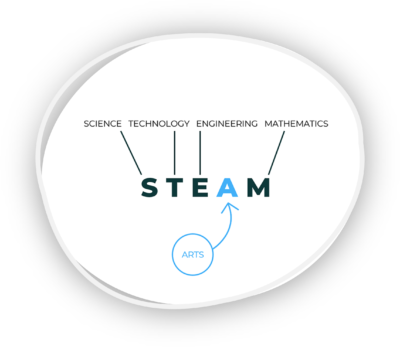
Intellectual Output 2 – STEAM Methodology Skills Framework
The aim of IO2 is the development of a methodology aimed at designing an innovative response to an economic or social challenge through cross-fertilization.
The methodology stems from the hackathon methodology (challenge, limited time, competition between teams), including the letter “A” of arts among the STEM competencies: from STEM to STEAM. The main features of the methodology make it a useful tool not only with toward its primary purpose – i.e. the generation of ideas and solutions from a specific need – but also from an educational point of view: the challenge favors teamworking, stimulating participants to collaborate with people often unknown, or coming from fields of study or professions far from their own; the limited time favors problem-solving: as reported in the literature on creative thinking (see for example Edward De Bono), the more the human mind is stressed by constraints the more lateral thinking is activated.
Intellectual Output 3 – STEAMProcess Game
The objective of IO3 is the creation of an original and engaging educational tool for the training of students and STEM professionals in Artistic Skills, in order to stimulate a STEAM approach to research and design.
Through a gamification process, the methodology developed during IO2 will be “translated” into a game aimed at training the creative and artistic skills of professionals and students in the scientific sector.
Implementers
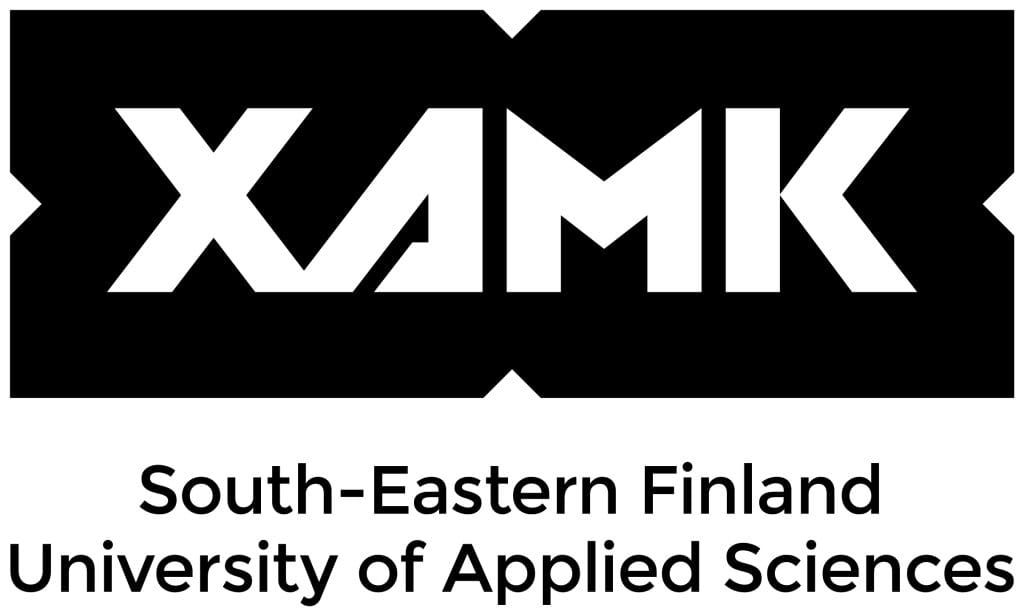
South-Eastern Finland University of Applied Sciences
Xamk is a responsible institute of higher education focusing on wellbeing, technology and creative industries. Its research, development and innovation (RDI) activities are divided into four focus areas: Forest, the Environment and Energy; Sustainable Wellbeing; Digital Economy; and Logistics, Marine Technology and Transport. The work in these focus areas aims to create ecosystems that generate innovations, combining research, education and business activities. In addition, Xamk operates and develops novel and relevant research infrastructure and laboratories in order to support its RDI activities and projects.
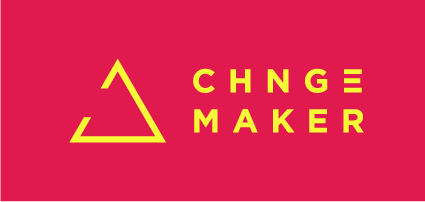
Changemaker
Changemaker is a privately held consultancy company with extensive knowledge and experience in fundraising and project development, sustainable development, matchmaking and innovation services, digital service development, games and visualization. Based in Gothenburg, Sweden, with partners and customers in Sweden, Denmark and Germany.
For more than 20 years Changemaker has helped companies and organizations with tailor-made solutions for leadership, team building and change management. They offer workshops and lectures, project leading and process competence, for both businesses, schools and individuals. Their incentives and intentions are to create change, participation, sustainability, joy and creativity.
More information
Changemaker AB
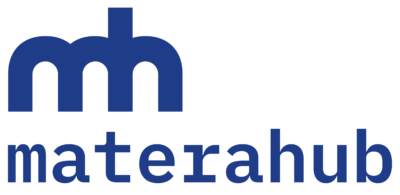
Materahub
Materahub manages international pilot projects to support cultural and creative industries, encouraging innovation and inclusion processes and a new entrepreneurial vision to face contemporary challenges.
Materahub organizes several international Capacity Building activities, aimed at meeting and contaminating skills between local and international experts, entrepreneurs and policy makers. These are projects funded by the European Erasmus + programs, Cosme, Interreg, Horizion 2020, etc.
Materahub is also a Europe Direct Center for Matera and its province. It is the official information point recognized by the European Commission which aims to promote calls for proposals and initiatives put forward by the European Union and convey the sense of European citizenship.
Since 2010, Materahub has been the Intermediary Organization of the European Erasmus for Young Entrepreneurs program; since 2014 it is the Italian host of the Creative Business Cup, the only international competition dedicated to cultural and creative industries.
Materahub is a member of the Puglia Creative District and is part of the cluster of Cultural Industries and Creative Basilicata Creativa. The Consortium is also included in the international CARP network that promotes cultural routes on the prehistoric art of the Council of Europe.
More information
Consorzio Materahub – Cultural and Creative Industries
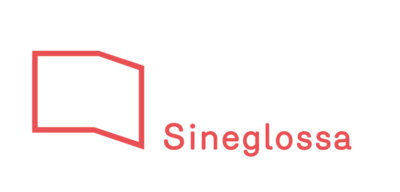
Sineglossa
Sineglossa is a moist, fertile soil for experimentation about everything contemporary.
Sineglossa introduces artists to public and private organizations in order to create synergies among them and to start training, storytelling and development processes, thus responding to the companies’ need for innovation and to public authorities’ need for local development.
Sineglossa carries out the whole process. Relying on a strategic analysis of the organization’s needs, it creatively designs, realizes and communicate tailored artistic interventions in companies or public organizations. Artists are recruited through direct or public calls. Sineglossa monitors the intervention’s outcome. After the realization of the intervention, it encourages both artists and the involved organizations to reflect about it, thus aiming at creating a different thinking paradigm that gives artists a new role in the contemporary society.
Sineglossa intends to facilitate an organic integration of art in the community, understood as made of citizens, public and private organizations. We believe that artists, thanks to their skills and to their distinguishing visionary approach, can contribute with their interventions to the social and economic development of the community.
More information
sineglossa | Nuovo Rinascimento

Conexiones improbables
Conexiones improbables is a Platform that promotes and develops Open Innovation projects. It achieves this by implementing a hybrid methodology that combines the needs and challenges of companies or organizations with the creativity and expertise of artists or creators to obtain alternative results. It encourages responsible innovation in terms of impact, sustainability, commitment, deep-rootedness and radicalness (Slow Innovation).
In short, to innovate the ways to innovate.
The ultimate goal is to encourage exploration processes to innovate and transform organizations through artistically and culturally based experiences. It does this by creating a context of high added value, diversity and creativity that is applied to both companies/organizations and their projects. This manages to implement change and innovation.
Conexiones improbables uses an Open Innovation methodology to help all manner of businesses and organisations confront a challenge, problem or need in order to achieve more creative and entrenched results than by using classical innovation methodologies.
The methodology has been recognized by the European Union as a good practice for developing entrepreneurial and innovation potential of the cultural and creative sectors.
More information
CONEXIONES improbables
Current
STEAM has been an exciting journey to the realm between arts and science. It has certainly sparked many inspiring conversations and a strong interest to dig deeper and see further. I think for many of us it is quite natural to believe there is something in common with great art and science, though it is really tough to actually start pinpointing what it is.
I think the one aspect that inspired most conversation was the connection to ancient philosophy, masters that were both artists and scientists, in an age where our society wasn’t as siloed as it is today. Taking that historical perspective reminded us once again of basic things of life, our need to understand and explain the world we live in, and our own role in it as human beings.
Incredible advances in science and technology have enabled us a living environment that we hardly could even dream of even just a few hundred years ago. At the same time however, we are yearning for more answers than just science can give us. We are hopefully on our way to a better balance between arts, science, and other elements of better and more sustainable lives.
– Silja Suntola, project manager, South-Eastern Finland University of Applied Sciences
STEAMProcess – Innovating the transition process from STEM to STEAM approach in science, teaching and training
Introducing the (A) in STEM Processes
This publication has arts & science cases collected from all across the globe in the pursuit of wanting to understand how the arts and science collide. These cases were collected by all our project partners from the different corners of Europe, each bringing their own point of view and understanding of the themes with them.

As we analyzed the case data, we formed the three phases: Insight, Process and Output. This thinking follows a very general model of any project. First, we have the idea, next we plan and create it, and lastly we show the end product. Categorizing these arts and science cases into the unique phases helped us to understand what kind of collision exists already between them.
Read the publication here: STEAMProcess – Introducing the (A) in STEM Processes (xamk.fi)

STEAMProcess Methodology Handbook
The STEAM Process handbook is a practical tool addressed to trainers, both in the formal and informal education fields, to implement STEAM practices within their own organizations, schools, universities, academies.
The handbook is divided into three sections:
WHY → References to explain the importance of the STEAM approach both from a theoretical point of view (importance of transversal skills to face the challenges of the contemporary world) and from a practical point of view (new job opportunities).
WHAT → Description of the key concepts that define a STEAM practice.
HOW → Three original activities, created specifically for the STEAM Process project, corresponding to the three main phases of a creative process:
- INSIGHT → (RE)CREATE ART, an activity to enhance the awareness skills of the learners
- PROCESS → USELESS MACHINE, an activity to enhance the creative skills of the learners
- OUTPUT → ARTSCIENCE PROJECT, an activity to enhance the social impact of learners’ projects and ideas
The handbook contains tips for trainers, to facilitate the autonomous implementation of the activities, and the BE INSPIRED boxes, to explore concrete examples of STEAM good practices developed at European level.
Read and download the STEAMProcess Methodology Handbook here [PDF, 724Kb]
STEAMProcess Game for training students and STEM professionals in artistic skills
The STEAM Process game is an educational tool for the training of students and STEM professionals in Artistic Skills, in order to stimulate a STEAM approach to research and design. Download the game set, print and cut the cards and templates, and start playing!
Download the printable STEAMProcess Game Set here [PDF, 2.26Mb]

STEAM: Why Arts Matter Podcast
STEAM: Why Arts Matter is a podcast for those people who want to understand how the arts contribute to our society and are revolutionizing future education.
This podcast is part of the STEAMProcess project, an European Erasmus+ Project developed and coordinated by Xamk, Changemakers AB, Materahub, Sineglossa and Conexiones Improbables. The project has the ambition of fostering disruptive innovation and promotes the use of artistic soft-skills in science/tech education and practice. This podcast is produced by Materahub.
- You can find all the episodes on this project site
- On Spreaker: Steam: Why Arts Matter (spreaker.com)
- On Spotify: Steam: Why Arts Matter (spotify.com)
Thank you for listening to our podcast!
EPISODE 1: From STEM to STEAM – with Silja Suntola
Introducing the letter A of the STEAM project, Silja Suntola talks about how the arts have the power to enchant. They are ‘technologies of enchantment’ that possess the ability to dazzle, bewitch and captivate their recipients as if exerting a hypnotic influence. The agency of art is not in itself physical but is the result of the expectations, understandings and definitions that have been inscribed on the work of art by the social fields that give it an almost magical agency.
About the Guest:
- Silja Suntola: https://www.linkedin.com/in/silja-suntola-87b11017
- Xamk website: https://koulutuskalenteri.xamk.fi/en/frontpage/
EPISODE 2: The Artistic Thinking Approach – with Alessia Tripaldi
How does art ‘go into action’? To answer these questions, we must first move away from a conception of art as a system of communication, a vehicle of meaning or a mechanism for creating meaning, and instead approach it as ‘a matter of doing’.
“The role of art is no longer to form imaginary and utopian realities, but to actually be ways of living and models of action within the existing realm, whatever the scale chosen by the artist”. Bourriaud (2002:13)
About the Guest:
- Alessia Tripaldi: https://www.linkedin.com/in/alessia-tripaldi-8826388b/
- Sineglossa website: https://www.sineglossa.it/
EPISODE 3: Futures Need Arts – with Roberto Gómez de la Iglesia
Transdisciplinarity connotes a research strategy that crosses many disciplinary boundaries to create a holistic approach.It applies to research efforts focused on problems that cross the boundaries of two or more disciplines, such as research on effective information systems for biomedical research (see bioinformatics), and can refer to concepts or methods that were originally developed by one discipline, but are now used by several others, such as ethnography, a field research method originally developed in anthropology but now widely used by other disciplines.
About the Guest:
- Roberto Gómez de la Iglesia: https://www.linkedin.com/in/rgomezdelaiglesia/
- Conexiones Improbables website: https://conexionesimprobables.es/v3/
EPISODE 4: The Industries of Culture and Creativity – with Paolo Montemurro
Digitalization, competition and automation favor those whose work is easy to scale but hard to imitate and routinise. The creative industries are such an example: they create stories and experiences that can be distributed across multiple media and easily exported; they supply services that enable their clients to stand out in crowded markets, and they rely on talent performing creative and artistic tasks that are hard to replace with robots and algorithms.
The sector is already a vital part of our economies, growing twice as fast as other sectors and employing over two million people. Technological developments like 5G connectivity, augmented reality and widespread artificial intelligence create further opportunities. This is why it is important to acknowledge the creative industries as a strategically important sector for the entire society.
About the Guest:
- Paolo Montemurro: https://www.linkedin.com/in/paolo-montemurro/
- Materahub website: https://www.materahub.com/
EPISODE 5: Creativity is Transforming the Labor Market – with Tom Løyche
In a complex and rapidly changing environment, marked by a growing uncertainty in the planning and definition of sustainable development strategies, creativity has started to represent a key factor for companies, both for competitiveness and innovation. Indeed, more and more companies throughout the world assert that, in addition to scientific and technological skills, one of the critical skills needed for innovation to happen, and to be of value for society, is creativity. It offers alternative perspectives, inspires surprising directions, and can act as catalysts for a successful and socially responsible transformation of industries into products and new social, ecological and economic models.
About the Guest:
- Tom Løyche: https://www.linkedin.com/in/tom-l%C3%B8yche-148598/
- Changemaker AB website:http://changemaker.nu/
With the support of the Erasmus+ programme of the European Union. The European Commission’s support for the production of this publication does not constitute an endorsement of the contents, which reflect the views only of the authors, and the Commission cannot be held responsible for any use which may be made of the information contained therein.
“STEAM: why arts matter” is a podcast for those people who want to understand how the arts contribute to our society and are revolutionizing future education. This podcast is part of the STEAMProcess project, an European Erasmus+ Project developed and coordinated by XAMK, Changemakers AB, Materahub, Sineglossa and Conexiones Improbables. The project has the ambition of fostering disruptive innovation and promotes the use of artistic soft-skills in science/tech education and practice.
This podcast is produced by Materahub.
Listen to the first episode on Spreaker: From STEM to STEAM – with Silja Suntola | Spreaker
On Spotify: Steam: Why Arts Matter | Podcast on Spotify
When we talk about the union between art and science, the mind immediately runs to the figure of Leonardo da Vinci, the scientist / artist icon of the Renaissance and of a transversal and multidisciplinary thought, in which technique and aesthetics represent the two faces of creativity.
In developing the STEAM methodology, which will soon be published on the website dedicated to project outputs, we were inspired by a “Leonardo” figure of more recent Italian history, that of the twentieth century: Bruno Munari (1907-1998).
Artist, designer and inventor, Munari worked in balance – or in breaking the balance – between functionality and aesthetics, between artistic languages and technological innovations. He put no boundaries between the disciplines he crossed: “When the objects we use every day and the surroundings we live in have become in themselves a work of art”, he said, “then we shall be able to say that we have achieved a balanced life”. There is artistic visionary in his industrial design creations – furniture, objects, car dyes and shop windows -, and there is technical research in his artistic works, through which he explores light (as in “experiments with polarized light”) and space, anticipating the artistic language of installations and video installations.
Author of numerous editorial works – from essays to children’s books to the “unreadable books”, in which the text leaves room for the book itself as a creative object -, in the work Fantasia investigates the concept of creativity, which defines “that which wasn’t there before, but which can be made simply and completely”. In the book, Munari proposes several techniques to generate something new:
- overturning
- repetition
- visual affinities
- color change
- change of matter
- change of place
- change of function
- change of motion
- change of size
- fusion of different elements in a single body
For the development of the STEAM methodology, we were inspired by one of his most famous works, in which art and technique, aesthetics and functionality come together in a single object: the series of Useless Machines. “They are useless because they do not make anything, they do not eliminate labor, they do not save time and money, and they do not produce any commodities. They are nothing but colorful, mobile objects, specially designed to create a specific variety of combinations, movements, shapes and colors”.
What is the functionality of a useless machine? “A useless machine is the perfect device by means of which we can easily revive our imagination, daily afflicted by useful machines”.
If Fantasy is “Everything that was not there before even if it was unattainable”, Invention is “Everything that was not there before but exclusively practical and without aesthetic problems”, Creativity is “Everything that was not there before, but which can be made simply and completely”, to imagine it is necessary to free oneself from the yoke of the final goal, creating a free space in which the goal is experimentation itself: “Fantasy, invention, creativity thinks, Imagination sees”.
Written by Alessia Tripaldi, Sineglossa
The STEAMProcess project’s first output will be published soon as a web-based publication. This publication will also contain the material as a downloadable PDF. The objective of IO1 is to create the framework of the A (Art) Skills; the soft skills that are typical of artistic processes.
In the general perspective of introducing the variable A in the STEM processes, it is, in fact, necessary to define the added value that artists can bring to the STEM sectors in terms of soft skills (e.g. the ability to think out of the box, the ability to manage unknowns, the ability to establish an empathic relationship with heterogeneous contexts, etc.).
We explore this theme through 16 cases that we have gathered and divided into three Phases. These phases are 1) INSIGHT, Instinct, 2) PROCESS, “Test drives” and 3) OUTPUT, Social Impact. Before diving into the cases, the publication will showcase some widely knows frameworks and methodologies on how to map the collision of arts and science.
All 16 cases have an introduction to their main idea through Who, What, Why and Results. With this publication we hope aspire respect and awe towards art, just like the admiration we have for great science.
The answer is a resounding “yes”. It was no coincidence that the Bauhaus of the 20th century basically engineered a change in the educational paradigm, with limitations at the time that we would find difficult to admit today, such as the role of women in the movement. But it implied a revolution not only in artistic education but also in the role that the arts should play with regard to science, technology, engineering, etc.
In September 2020, the President of the European Commission, Ursula von der Leyen, presented an initiative that aims to bring together the scientific, social, technological, artistic and cultural fields in the search for solutions to contemporary challenges, as well as helping to achieve the European Green Deal. This initiative enshrines a seemingly simple idea: how to create a more sustainable, beautiful and inclusive Europe.
Europe is aware of the need for a multidisciplinary approach in the search for sustainable solutions, in which soft technologies have taken on a new relevance. And it does so by recapturing the essence of change in relation to its time that the German Bauhaus movement, founded by Gropius, represented between 1919 and 1933 in terms of avant-garde, divergent thinking.
Europe therefore intends to break with the existing hierarchy of generating knowledge and the potential catalyst for transformation and innovation. There are neither first-rate nor second- or third-rate disciplines. Today more than ever we need to construct transversal, complex visions to respond to complex problems, incorporating scientific, technological and humanistic perspectives in a cross-cutting manner, making creativity a vital component of this new knowledge that will lead us to societies that seek solutions focused on people and nature, posing new questions that help to endow the tools we use with new shared meanings.
The dominance of neoliberal economic discourse in the world has led us to understand education from an exclusively utilitarian perspective: educating for employment and productivity. There is a growing number of young people with a high technical mastery of “hard” tools and processes, but they often do not have a clear understanding of the why and what for of these tools.
Education has to prepare people for life and, in any case, for employability, especially in an environment of accelerated uncertainty, in which disciplinary and sectoral barriers are becoming increasingly blurred, in contrast to ultra-specialised training processes.
The New European Bauhaus must also engineer the capacity for disruptive innovation that is required by education. And it must do so under the idea that Ursula von der Leyen has already expressed in that it is essentially a cultural movement. Does anyone still have any doubts?
Written by Roberto Gómez de la Iglesia, Conexiones improbables
What can cultural institutions do to foster a STEAM approach, in which art acts as a stimulus for the dissemination and understanding of scientific research and science acts as a stimulus for the search for new artistic languages and new means of expression?
For several years, the most important museums have been promoting initiatives aimed at audience engagement, enriching their programs with projects that involve the public, which from passive users of exhibitions are transformed into active users of workshops, interactive visits, etc.
The Leonardo da Vinci Museum
A good practice in this direction comes from the National Museum of Science and Technology “Leonardo da Vinci” in Milan, born in 1953, through the Future Inventors program. The program “aims to involve children aged 11 to 13 in STEM disciplines” through an innovative approach that overcomes the distinction between scientific and artistic subjects. The program’s “place of experimentation” is a permanent laboratory where all museum visitors can interact with art installations that stand at the crossroads of art, science and technology. The main themes around which the digital installations hosted by the museum revolve are image, sound and pixel.
The most interesting element to highlight of the Future Inventors initiative is the high quality of the works of art, produced by contemporary artists of international standing such as Michael Bromley, Anders Lind, Machiel Veltkamp and Moritz Simon Geist. It is in this balance between artistic research and scientific research that the A of Art can organically fit into the STEM disciplines. The digital installations hosted by Future Inventors are works of art in terms of aesthetics and language, but at the same time they are innovative teaching tools, which educate young people in scientific contents through an experiential approach that allows them to manipulate the works and interact with them.
Be inspired: watch the video with the artworks of the Future Inventors laboratory
The Serpentine Gallery
But cultural institutions can go even further, becoming STEAM research and experimentation centers themselves. This is the goal of the Arts Technologies program of the Serpentine Gallery in London, a contemporary art gallery founded in 1970.
“The Arts Technologies program at Serpentine proposes critical and interdisciplinary perspectives on advanced technologies through artistic interventions.
Challenging and reshaping the role that technologies can play in culture and society is part of Serpentine’s commitment to supporting new artistic experiments at what has now become a historical intersection. The program initiates and supports artists in developing ambitious artworks that deploy advanced technologies as a medium, tool or topic, often operating beyond gallery walls.
The foundation of the Arts Technologies program is located in an evolving R&D Platform that supports the development of infrastructures for ongoing artistic exploration and interrogation of advanced and emerging technologies. ”
The Serpentine Gallery is one of the most virtuous examples of how a cultural center, which speaks the language of art and which at the same time lives in the contemporary world, in which one cannot fail to consider the specific weight of new technologies, can offer a relevant contribution in the research and creation of innovative technologies.
The world of culture cannot leave the debate and development of new technologies in the hands of technicians: for them to evolve in a sustainable and inclusive direction, culture and science must dialogue on directions and objectives of technological development.
Be inspired: watch the video of the I Magma app / oracle created by the artist Jenna Sutela
Written by Alessia Tripaldi, Sineglossa
The European project “STEAM Process” has the ambition to foster disruptive innovation for research and science, by promoting the use of artistic soft-skills in science/tech education and practice.
The framework A (Art) Skills helps to define the added value that artists can bring to the STEM sectors in terms of learning and research (e.g. the ability to think out of the box, the ability to manage unknowns, the ability to establish an empathic relationship with heterogeneous contexts, etc.). Here is an interesting interview with Felice Vino, an Italian artist based in Milan, who explain to us his interest in art and science and the impact on our life.
What sparked your interest to work with arts & science & education?
From what I remember, already in early childhood I was animated by a heterogeneous and omnivorous curiosity. The wonder I felt towards a scientific phenomenon and a work of art typical of that age was simply enriched by a precise awareness: art and science are for me united by aesthetic principles.
When I realized that a musical score, a painting, a mathematical formula, a page of code, stimulated in me the same sense of wonder and awareness, it was impossible to separate these areas.
What was your professional route to the theme? (ie. did your interest spark from studies, work experience, hobbies or something else?)
My educational and professional path reflects my need for hybridization. Born in Potenza (Basilicata, Italy), I graduated in Foreign Languages and Literature with honors.
Before and after I explored the world of communication, art and storytelling – theater, comics, fiction – to arrive at the video, which allowed me to simultaneously approach all forms of communication and expression that I was passionate about. With my video production activity I wrote, directed and produced commercials, institutional videos, music videos and the prototype of a science fiction webseries.
I moved to Bologna in 2016 where I continued to work in the field of video communication and it was during this period that the need to further explore a series of creative processes that were no longer about the profession but about pure aesthetics became stronger in me.
Today I live in Milan where I was able to deepen my research by participating in a course of specialization on cultural and creative enterprise and a European program of blended residency (INNOCULT) that sees among the partners the MEET Digital Culture Centre in Milan and for which I created an innovative practice of audience experience developed with an informal collective of which I am co-founder and in which I deal mainly with creative design and multimedia storytelling.
With the same collective of artists, scholars and creatives, we are producing a practice of immersive 3D data visualization (VR and XR) in collaboration with a group of researchers from the Zooplantlab (Department of Biotechnology and Biosciences of Bicocca University). The MDM_01 project consists in the visualization of data from the analysis of microbiotic ecosystems present in aquifers, in particular the study focuses on what is called dark matter, i.e. bacteria so small that only the latest filtering techniques have been able to effectively detect. The visualization strategies aim on the one hand to create a captivating story that can promote the dissemination, and on the other hand to adopt creative strategies that, responding to needs different from those of pure analysis, can expand the spectrum of information contained in the data already collected.
What is art in science in practice?
Describe the core idea of the project, especially the role of the artistic part?
Contemporary society is founded on data. They portray us, define us, condition our behavior and that of those who influence our lives. Consciousness about their importance is, however, fluctuating, sometimes more exploited to instill fear than to mature awareness.
In the two projects I was talking about, with MEET and Zooplantlab, data visualization is a tool to facilitate in the user/spectator a greater awareness of a world, the world of data, that only by knowing can be influenced and controlled.
The tools of art, storytelling, visual, audio, want to stimulate in the user the need to explore an emerging world and to mature a conscience about the implications that it has on our lives.
Asking data to be also beautiful is part of a request for the humanization of the same through a path of re-appropriation and emotional participation.
For collaboration and to get in touch with Felice Vino:
Interview done by Germana Girelli, Materahub
Beyond the political correctness of incorporating the ‘A’ for Arts into the STEM formula, it is important to understand the various aspects that can be played by the arts, and culture and creativity in general, in relation to the formal and non-formal educational environment.
Although it may seem evident, the arts involve a series of non-uniform practices, disciplines and expressions that enable an approach to reality and an understanding of the world that are different from those of technology and science. Not opposing, but complementary. The arts are the ‘sphere from which to create, compose and propose, working with diverse forms, materials, languages, expressions and relationships, and producing new meanings, stories, representations, devices, symbolic spaces and subjectivities’[1].
The role played by the arts today in the regulated environment generally clearly reflects a social undervaluing of the arts, deemed to be minor, dispensable, useless and impractical content. Repositioning the arts in educational curriculums, as well as in other non-formal education processes, is apparently a crucial step towards their reassessment and to enriching education by incorporating their various aspects.
We propose five potential fields of Arts-Education interaction, assuming that each of these affects various areas of the educational and training system, basically in schools, and that they can be understood as a gradual process of qualification and significance that the role of the ‘A’ has to play in this system:
- The arts as an independent discipline: This aspect is the one that has traditionally linked the arts to the limited idea of crafts or plastic arts expression, or in some cases to knowledge based on a historical perspective of areas such as music (usually classical). Although various attempts to reassess expressive, relational and artistic skills among pupils have been implemented, it is apparently clear that, at least in Spain, they have not been successful either in terms of content or methodology, with very few cases in which the arts as a discipline can act on an equal footing with other areas of knowledge.
- The arts as a discipline linked to other disciplines: This aspect focuses on how the arts are linked to other fields of knowledge in two ways: (1) by improving the understanding of scientific-technical knowledge through analysing and interpreting existing works of art, for example in fields such as biology, geometry, physics or chemistry, or (2) by interpreting and recording scientific-technical, social or natural processes in an artistic manner by generating artefacts (broadly speaking, works of art from photography, music, theatre, etc.). A good example in this sense could be Maths, Science and Music or Gorputzaldiak.
- The arts as a structuring discourse: This aspect converts the arts, culture and creativity into the backbone of the various areas of knowledge that make up curriculums. The arts and creative expressions become the guiding thread of educational discourse through which various disciplines are linked, thereby promoting an overall perspective and capacity for expression and experimentation in students. One notable example of this is Aliances Magnet.
- The arts as a transformative experience: This aspect converts the arts and creativity into unique experience elements for students as well as shared meaning creative elements. A way of addressing challenges or needs by generating specific processes that seek change, reflection or transformation; co-creation processes, usually mediated by artists or creative people, that address and lead to tangible or intangible solutions that address a detected need or problem, thereby bringing out the creative, expressive and relational capacities of students. Two interesting examples of this aspect are In Residence: Artists at the Schools of Barcelona or LÓVA.
- The arts as a process of innovation: This aspect converts the arts and creativity into tools through which to address challenges faced by the educational community, focusing not on creating works of art in the traditional sense, but on their role as articulators of creative processes accompanying transformation and change. These may be processes that affect organisational innovation, strategic reassessments and technological, service or relational innovation processes, among others. Several examples of this can be found in these projects developed by Conexiones improbables together with Lauaxeta Ikastola and San Pelayo School.
Article written by Roberto Gómez de la Iglesia and Anna Pinotti Blanch.
[1] Antón, R. and Gómez de la Iglesia, R., Kultursistema. Matriz para el mapeado, interpretación y análisis de los ecosistemas culturales y creativos [Matrix for mapping, interpreting and analysing cultural and creative ecosystems], Ed. Karraskan, Bilbao, 2017.
Excerpt from “Business, Open Innovation and Art”, written by BeiBei Song.
For much of human history, artistry and craftsmanship were natural ingredients in product making and commerce. The Industrial Age, taken over by machines and assembly lines, squeezed cultural values and uniqueness out of many products, in favor of uniformity, volume and speed, to minimize costs and maximize profits. While industrialization improved the human condition in many ways, this “dehydration” in business has been pervasive—humans were used simply as machines to enable mass production; corporate offices were places for making a living but not living a life; and 20th century management was all about efficiency, the bottom-line, and shareholder value (with an obsession about quarterly earnings). Art went its own way, with artists either starving or celebrated in museums and auction houses away from everyday life, or some precarious point in between. This bifurcation led to antipathy between the two worlds, which is taken for granted in modern society. Artists view businesspeople as philistines, and businesspeople cannot see much use of art in corporate life beyond decoration in the lobby, and maybe some branding value, even though some may patronize art after making their fortune.
Special issue editors: BeiBei Song and Piero Formica, 2020.
This publication is a reprint of articles from the Special Issue published online in the open access journal Journal of Open Innovation: Technology, Market, and Complexity (ISSN 2199-8531) from 2018 to 2020.
The availability and popularity of video games has grown to become a global phenomenon in recent years. In spring 2020, gaming quickly emerged as one of the most popular activities during the initial outbreak of the global COVID-19 pandemic as user engagement and spending surged between February and April of that year. Especially younger generations Gen Z and Millennials spent more time on gaming as the medium was a convenient way to spend time during initial stay at home orders, lockdowns, and social distancing.
The video game industry is flourishing, which is not only a boon to gamers, but also to those who are interested in a career in developing games.
Many years of training and development experience are needed to take a video game from its initial concept to a market-ready product. The work can be challenging, but also exciting and highly rewarding, particularly for those who wish to combine their technical acumen with creative license. Video game development is a field in which STEM students may find ample opportunity for success.
Every game starts with an idea, but nurturing a concept is by no means a simple task. The ideation process can involve brainstorming ideas, creating sketches or prototypes to test those ideas, and evolving or streamlining an idea as needed. Ideation may begin with one person having a “light bulb moment,” arriving at what they think is a winning premise. Typically, however, a full team of developers is involved in shepherding a gaming idea through to the next steps.
Since 2020 in the Swedish region of Värmland an original project started, giving the possibility to game developers to work together with practitioners coming from other sectors: artists, storytellers, graphic designers and more. “The Great Journey” is a community-based project where Game makers have the possibility to developer new digital games in close cooperation with people coming from diverse creative sectors.
“The Great Journey” offers to a community of more than 350 people the opportunity to participate in lectures and workshops around meaningful topics, during a weekly event where students and indie studios get to work with the various aspects of game creation.
“The Great Journey” organizes periodically Game Jams where practitioners coming from different field work together during a 3-day event, generating new ideas in a stimulating environment made up of people from different fields of the creative sector.
Read more about The Great Journey: https://www.thegreatjourney.se/
Written by Francesca Olivier, Changemaker
“The greatest scientists are artists as well,” said Albert Einstein.
Art has long contributed to the work and communication of science, both science and art are human attempts to understand and describe the world around us. The subjects and methods have different traditions, and the intended audiences are different, but the motivations and goals are fundamentally the same. One of the most primitive innate needs of humans is to understand the world around us, and then share that understanding. Both artists and scientists strive to see the world in new ways, and to communicate that vision, experimenting and gaining the new insights.
The Science Gallery Venice, in the North of Italy, is part of the Global Science Gallery Network. It offers a unique and immersive experience to explore the humans relationship to nature and the interconnections with one another. The main goal is to use creativity and inspire new ideas and collaborations in pursuit of a better future for the next generations. The Science Gallery Venice is different than a typical art galleries and traditional science museums, it aims to find new ways of engaging young people with some of the global challenges of our time.
The programmes are dynamic, exciting, controversial and always able to capture the imagination and curiosity of the media and of all the audiences; are connecting with young adults’ lives, evolving interests and concerns, enabling them to express their views and creatively engage with science, technology and innovation. The Gallery offers them opportunities to boost their social connections with dynamic and inclusive events, to actively participate to innovative thought-provoking projects and to increase their skills’ set to shape the future they dream through the programmes designed. Bringing science and art together into creative collisions provides an opportunity to look at important questions from different angles. The aim is to foster creative collisions across and beyond traditional boundaries, bringing artists, scientists, designers, engineers and young adults together to explore and shape the future in an inspiring environment.
Earth Water Sky in Science Gallery Venice is one of the residency programmes for artists interested in the environment and the latest in cutting edge environmental knowledge. Every year
there is an open call for artists from any art form like digital arts, painting, sculpture, dance, performance, music, multimedia, video, film, photography, writing, drawing to apply for a 2 month fully funded residency in Venice. One of these artists who recently won the residency is Haseeb Ahmed, a research-based artist from the US, now based in Brussels. He produces objects, site-specific installations, films, and writes, often working collaboratively Ahmed integrates methodologies from the hard sciences into his art production. The aim of this residency is to empower scientists and artists for a more conscious and sustainable way of life and the Science Gallery Venice is the only place in Italy where to find this connection.
Written by Germana Girelli, Materahub
For art and creative thinking to use gamification methods in order to boost science teaching, we must acknowledge the basic principles behind gamification. In brief, gamification means taking the fun, motivating elements from games and applying them into a different environment, something not related to games.
Gamification is all about motivation. Yu-Kai Chou’s gamification framework called Octalysis (2012) describes the eight core drives behind human motivation. Instead of focusing on how to complete a task as quickly as possible, Octalysis is a human-focused design that acknowledges our humane qualities: Feelings, insecurities and reasons to want or not to want to do something. Gamification can help optimize people for their feelings, motivation and engagement instead of forcing them to complete tasks simply because they are required to do so.
But how is gamification related to STEAM? How can art and creative thinking use the methods of gamification to boost science teaching? Not all gamification methods are useful in the context. This leads us to the question of which gamification methods use or encourage creative thinking and which of them can be used to boost teaching, especially in STEM fields?
There are different ways to group gamification methods depending on the approach. To give some food for thought, gamification methods could be divided into four categories. These categories are in no way exhaustive and they do not contain all possible gamification methods.
The first category is progression-based methods, which are meant to show and map the progression and goals of an activity. These could include elements that are commonly found in games such as tutorials, challenges, certificates and rewards. All these methods give feedback to the player about their progression, how they are doing and what they have achieved. Art and creative thinking come in when visualizing these elements. Constant and immediate feedback is one of the cornerstones of games and gamification and with art, we can make it visual and easy to understand but with a single glance.
The second category focuses on gamification methods that require brainwork. These elements draw out our intellectual or logical attention and include curiosity, mystery, strategy and purpose. The concept of learning and gaining new skills falls into this category. Art can help facilitate these gamification methods into the activity by visualizing and piquing our interest. If the activity has meaning to it, it can become a powerful way to motivate.
The third category of gamification methods offers the player a frame and tools for harnessing their creativity and imagination. In a sandbox, almost anything can happen, but it still has boards on each side. Offering the player tools for creativity gives them also the chance to use these tools to create, explore or tell stories. This can help them to use their imagination without mental constraints inside the sandbox.
Gamification methods that involve more than one person also deserve their own category. The social aspect includes collaboration and teamwork, but also competition. Social elements can be combined with almost any form of art and, naturally, some forms of art are fundamentally social.
Not all gamification methods motivate everyone. It takes time and thought to find the most useful elements and the way to facilitate them into the activity. Gamification is not a silver bullet, but a set of tools and tools usually require some expertise on how to use them. Another way to divide gamification methods in relation to art could be to consider which of them are or activate into direct action, motivate to take action or directly support the activity. Depending on the approach, there is much to be found in gamification to help interface arts and science.
Written by Minna Porvari, XAMK
Sources
Yu-Kai Chou, The Octalysis Framework for Gamification & Behavorial Design, 2012.
Incorporating the Arts in STEM processes is often viewed as the doorway to another discipline, providing the humanistic perspective that is often lacking in innovation strategies focusing on productive or scientific-technological aspects.
There are very few experiences in which the Arts are welcomed on an equal footing with other disciplines. This is striking if we consider that the disciplinary distinction has been in existence for little more than two centuries.
There is still a long way to go before the Arts are viewed as a way of generating knowledge, like the sciences, and not simply as the icing on the cake of our existence.
The challenge involves several phases. The first is to move from multidisciplinarity, in which various disciplines coexist but do not contaminate each other, to interdisciplinarity, in which knowledge and views intersect.
But the really qualitative leap will be made if we are able to move from the combination of disciplinary outputs, the result of interdisciplinarity, to the combination of methods, tools and models of thought promoted by transdisciplinarity.
And the Arts are privileged in this respect. Artistic processes not only have applications in their own world (in creating artefacts or creations), but their creative basis allows their applicability in processes of cross-fertilisation with other fields, such as science, urban planning, education, health or industry.
The key lies in highlighting not so much what artists do as what they are, why and what they do it for, their way of looking at the world, of researching, and their ability to analyze complex systems, of acting as catalysts of hidden creative capabilities…
This is the reason why the great challenge of the A of STEAM lies not only in introducing artistic content in education, or even in making the Arts the guiding thread of the curriculum with regard to other subjects. The main challenge lies in incorporating a radically different approach to education per se, to its organisation, to the role of students and teachers in the processes of educational innovation, in making the creative process a methodological framework within which to rethink the ways of learning, of hybridising disciplines, perspectives and thoughts.
In short, the Arts can be a suitable framework for incorporating a critical, ethical and aesthetic perspective into our ways of life, in the search for new social responses that must also originate from education, against a backdrop of urgent sustainability and social inclusion.
Written by Roberto Gómez de la Iglesia, Conexiones Improbables
Traditionally, art and science have been treated as two separate disciplines, but when they are studied together it is extraordinary the impact one has on the other. Art is often an expression of scientific knowledge, science is behind mixing paint in the correct proportions, or creating perspective in a drawing while visual art has been used to document the natural world for thousands of years, from cave drawings of animals that help today’s researchers figure out yesterday’s fauna, to paintings of centuries-old experiments. One of the most famous examples of the interconnection between art and science is the work of Renaissance master Leonardo da Vinci. His scientific drawings demonstrate that he was also an inventor and researcher, he conducted his own experiments and studies on biology and civil engineering, astronomy and human anatomy.
The Italian painter is considered the polymath, obsessed with observing and understanding phenomena in nature, from the proportions of the human body to how the muscles of the lips moved. He wanted to know about everything around him, in minute detail, Isaacson writes. He wondered about questions “most people over the age of ten no longer puzzle about”, for instance, how the tongue of a woodpecker works.
Da Vinci’s emphasis on empirical observation also helped him improve his art, first, he was able to use what he learned from looking at nature to paint and draw, his studies of the body, animals, motion, shadow and light, perspective and proportion helped him better understand what he was seeing in front of him, and render it in art more accurately and finely than anyone else of his time.
Most importantly, his curiosity-driven explorations, and ability to connect art and science, helped him innovate his work, science and art are the very nature of human attempts to understand and describe the world around us. With the new technologies, we can see more changes taking place between art and science. Photography has always had a deep impact on the art world, it beautifully enhances our natural creative skills and lends an extra level of manipulation and scope. Another example in the working world would have to be the phenomenal creation and growth of Apple and Steve Jobs has been referred to as an artist because of how he approached the design of the hardware and product finishes. However, the most influential factor is the digitization, with the ongoing digital revolution, it has gained a much-needed boost, “digital arts” like CGI, animation, and virtual sculpture, have been giving wonderous insights into our possible artistic futures.
Written by Germana Girelli, Materahub
Art can remarkably help scientific research to broaden its horizons: as a source of ideas, a novel approach to problems, an alternative method of work, and an effective process of engagement. How does it actually happen? Here are 4 european best practices that stand out for the application of the interdisciplinary concept from STEM to STEAM.
1. Min the Fungi – Niche / Zweisamkeit
http://artlaboratory-berlin.org/html/eng-Mind-the-Fungi.htm
The Institute of Biotechnology works with Berlin citizens, artists and designers to develop new ideas and technologies for mushroom and lichen-based materials of the future.
Niche, by Fara Peluso, is a hybrid installation and living sculpture, which explores co-existence between fungi and algae microorganisms.
The sculpture Zweisamkeit combines an oak wood topography and several layers of biomaterial representing form in metamorphosis. It reflects on human development of the landscape, focusing on how we have defined and shaped our natural surroundings, but are in turn shaped by biological forces in the environment.
2. Regenerative Reliquary
https://www.amykarle.com/project/regenerative-reliquary/
Leveraging the intelligence of human stem cells, Amy Karle created “Regenerative Reliquary”, a bioprinted scaffold in the shape of a human hand design 3D printed in a biodegradable pegda hydrogel that disintegrates over time. The sculpture is installed in a bioreactor, with the intention that human Mesenchymal stem cells (hMSCs from an adult donor) seeded onto that design will eventually grow into tissue and mineralize into bone along that scaffold. Currently this is an artwork, but if this application was developed it would have many potential healthcare benefits.
3. Critical persistent rhythmic
http://www.robertopugliese.com/page37/page37.html
Roberto Pugliese wanted to draw attention to the global deforestation issue and his work combines science and sound, kinetic and programmed art.
The installation is made on the trunk of a hollow tree on which were set solenoids which energised by an electric current, produce a loud “click”. The software that manages the playback of the pulses is connected to a website from which, real time, statistics are downloaded on the state of global deforestation. The downloaded data is then translated into pulses to be distributed in time to the various solenoids. According to the statistics, every “click” produced by a solenoid represents the felling of a tree. This creates a dense, textured and insistent sound, a biomechanical graft that “screams” desperate for help and establishes an active relationship between the work and the audience, who is totally immersed in perceptive worlds that accompany him into a sensory experience.
4. ALMA
http://www.re-fream.eu/alma/
Alma is far more than a pH sensor. First of all, is a collaborative project co-created by many different professionals (like the artist Giulia Tommasello, material scientists, medical anthropologists, interaction designers, clothing designers, fashion designers) which based their work on data on stigma and taboos around intimate female health.
The result are four working prototypes of inclusive underwear that have an embedded, wearable biosensor for the non-invasive diagnosis of bacterial vaginosis. The prototype even has wireless communication that can potentially allow a female to access her own information, to know better her body and feel encouraged to seek appropriate help when needed.
Written by Sineglossa
Playing games is the only way most animals pass valuable knowledge to their next generation. A run-and-catch game among lion cubs not only strengthens their social bonds but also exposes them to vital skills they need to develop for their survival; agility, taking actions, reacting to their environment, and strategic thinking.
It is a known fact that the cognitive revolution about 70000 years ago, and the agricultural revolution around 30000 years ago, changed human lives in such a rapid way that our genes could not provide the proper evolutionary adaptations. That is the reason we find the urge in ourselves to go back to whatever our genes cry for, and find it difficult to diverge from what they dictate us to do.
The gross of digital games as early as the entrance of computers in our lives raised numerous discussions around the effects it could bring to our social-mental health, especially among children. As one of the most intelligent animals ever lived on the Earth, we have the benefit of being capable of practicing our technology and desire in a way that also meets our biological interests. The emergence of gamification and serious gaming are examples of such practices.
Playing games could indirectly transfer a message which could be a social-cultural concept or a scientific fact. Games, in contrast to for example books, force players to take part in the progress of the story, create a situation in which not only they could experience the results of their choices in a safe environment without any serious consequences but also develop their skills to predict obstacles and encounter them strategically. Digital games, having the advantage of rapid computing and revealing countless possibilities, would provide an exceptional opportunity for players to develop their creativity, imaginativeness, and innovation skills. The challenge we are facing now is to associate the technologies we access, with the interests we have, in order to provide educational methods to facilitate the transfer of knowledge to the next generation.
Written by Diba Mokhtabad, Changemaker
People often ask what art in science actually means. It sounds interesting and intriguing to many, but it does not really seem like anything practical or useful. Should it?
Yes, it should. Moreover, yes, you DO practice some level of arts and science too. We all use our human potential for most of what we do in our daily lives. Both sides of the brain function in symbiosis to take in information from our surroundings. Our left hemisphere processes linguistic and mathematical information, right one the information through our different senses: auditory, visual, kinesthetic and spatial. Our current society emphasizes information that is processed in linguistic and mathematical form. We seem to regard it as more trustworthy, precise and perhaps even more “true”.
However, we make decisions very much based on our experiences and understanding as a whole human being. We see, hear, smell and feel as well as have emotions, experiences and beliefs that effect what we make of all the information we have in the end. Why do we seem to disregard information from our right hemisphere, and at least pretend as if we make rational and logic decisions? Could we learn to become more aware of utilizing all kinds of information, even IF we cannot turn it to figures or numbers, or make otherwise “sense” of it? What if we started to pay more attention to how different kinds of information effects our thinking in general?
Art and science have strongly affected each other throughout history. We visualize and build things like models, prototypes or miniatures to make our thoughts easier to communicate and understand. We try and rehearse, or simulate situations or processes to get a “feel” of how they work. We imagine visions and dreams for what could be and try to figure out how it could be done in practice.
Technology has provided us with tools that allow almost anybody with little or no technical skills to use visualization, moving images, sounds or imaginary spaces for creating, testing and producing almost anything. Ultimately in the end, art bears in its essence the eternal questions of why. It provides tools and ways to emphasize and accentuate what we think is important, and to provide symbolic information for meanings.
If science answers the question how, art answers the question why. If science seeks for truths, art provides different perspectives and interpretations. And that’s a really a perfect combination, isn’t it?
Written by Silja Suntola, Project Manager at South-Eastern Finland University of Applied Sciences
For further interest
- Creative Soft Skills
STEAMProcess – Innovating the transition process from STEM to STEAM approach in science, teaching and training
Info
Budget
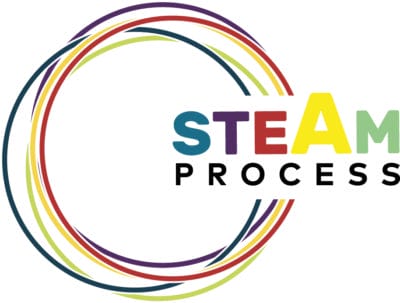




More information
Silja Suntola
Project manager
+358 50 439 0518
firstname.lastname@xamk.fi
Minna Porvari
Communications Manager
firstname.lastname@xamk.fi




